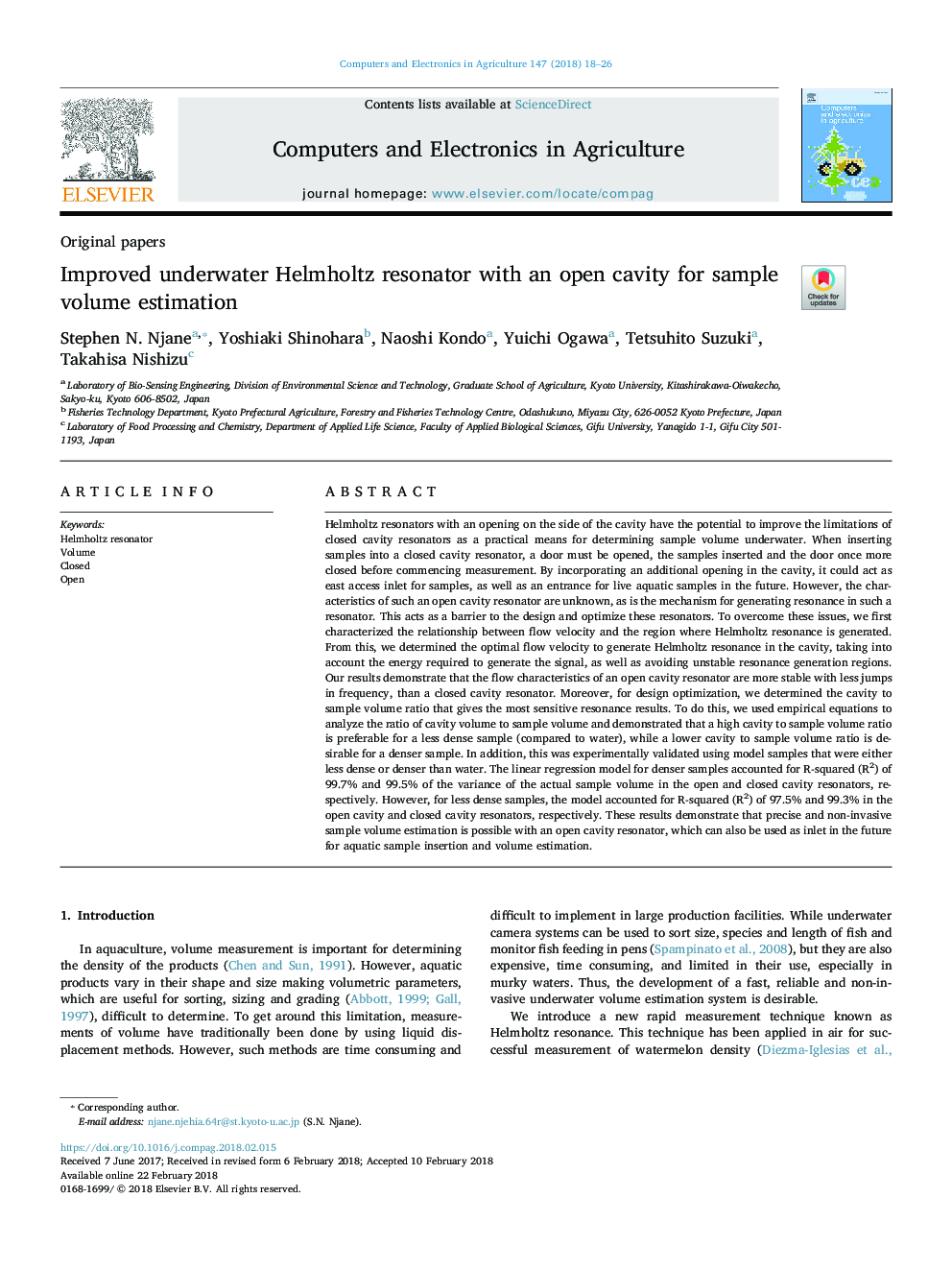| کد مقاله | کد نشریه | سال انتشار | مقاله انگلیسی | نسخه تمام متن |
|---|---|---|---|---|
| 6539597 | 1421101 | 2018 | 9 صفحه PDF | دانلود رایگان |
عنوان انگلیسی مقاله ISI
Improved underwater Helmholtz resonator with an open cavity for sample volume estimation
دانلود مقاله + سفارش ترجمه
دانلود مقاله ISI انگلیسی
رایگان برای ایرانیان
موضوعات مرتبط
مهندسی و علوم پایه
مهندسی کامپیوتر
نرم افزارهای علوم کامپیوتر
پیش نمایش صفحه اول مقاله

چکیده انگلیسی
Helmholtz resonators with an opening on the side of the cavity have the potential to improve the limitations of closed cavity resonators as a practical means for determining sample volume underwater. When inserting samples into a closed cavity resonator, a door must be opened, the samples inserted and the door once more closed before commencing measurement. By incorporating an additional opening in the cavity, it could act as east access inlet for samples, as well as an entrance for live aquatic samples in the future. However, the characteristics of such an open cavity resonator are unknown, as is the mechanism for generating resonance in such a resonator. This acts as a barrier to the design and optimize these resonators. To overcome these issues, we first characterized the relationship between flow velocity and the region where Helmholtz resonance is generated. From this, we determined the optimal flow velocity to generate Helmholtz resonance in the cavity, taking into account the energy required to generate the signal, as well as avoiding unstable resonance generation regions. Our results demonstrate that the flow characteristics of an open cavity resonator are more stable with less jumps in frequency, than a closed cavity resonator. Moreover, for design optimization, we determined the cavity to sample volume ratio that gives the most sensitive resonance results. To do this, we used empirical equations to analyze the ratio of cavity volume to sample volume and demonstrated that a high cavity to sample volume ratio is preferable for a less dense sample (compared to water), while a lower cavity to sample volume ratio is desirable for a denser sample. In addition, this was experimentally validated using model samples that were either less dense or denser than water. The linear regression model for denser samples accounted for R-squared (R2) of 99.7% and 99.5% of the variance of the actual sample volume in the open and closed cavity resonators, respectively. However, for less dense samples, the model accounted for R-squared (R2) of 97.5% and 99.3% in the open cavity and closed cavity resonators, respectively. These results demonstrate that precise and non-invasive sample volume estimation is possible with an open cavity resonator, which can also be used as inlet in the future for aquatic sample insertion and volume estimation.
ناشر
Database: Elsevier - ScienceDirect (ساینس دایرکت)
Journal: Computers and Electronics in Agriculture - Volume 147, April 2018, Pages 18-26
Journal: Computers and Electronics in Agriculture - Volume 147, April 2018, Pages 18-26
نویسندگان
Stephen N. Njane, Yoshiaki Shinohara, Naoshi Kondo, Yuichi Ogawa, Tetsuhito Suzuki, Takahisa Nishizu,